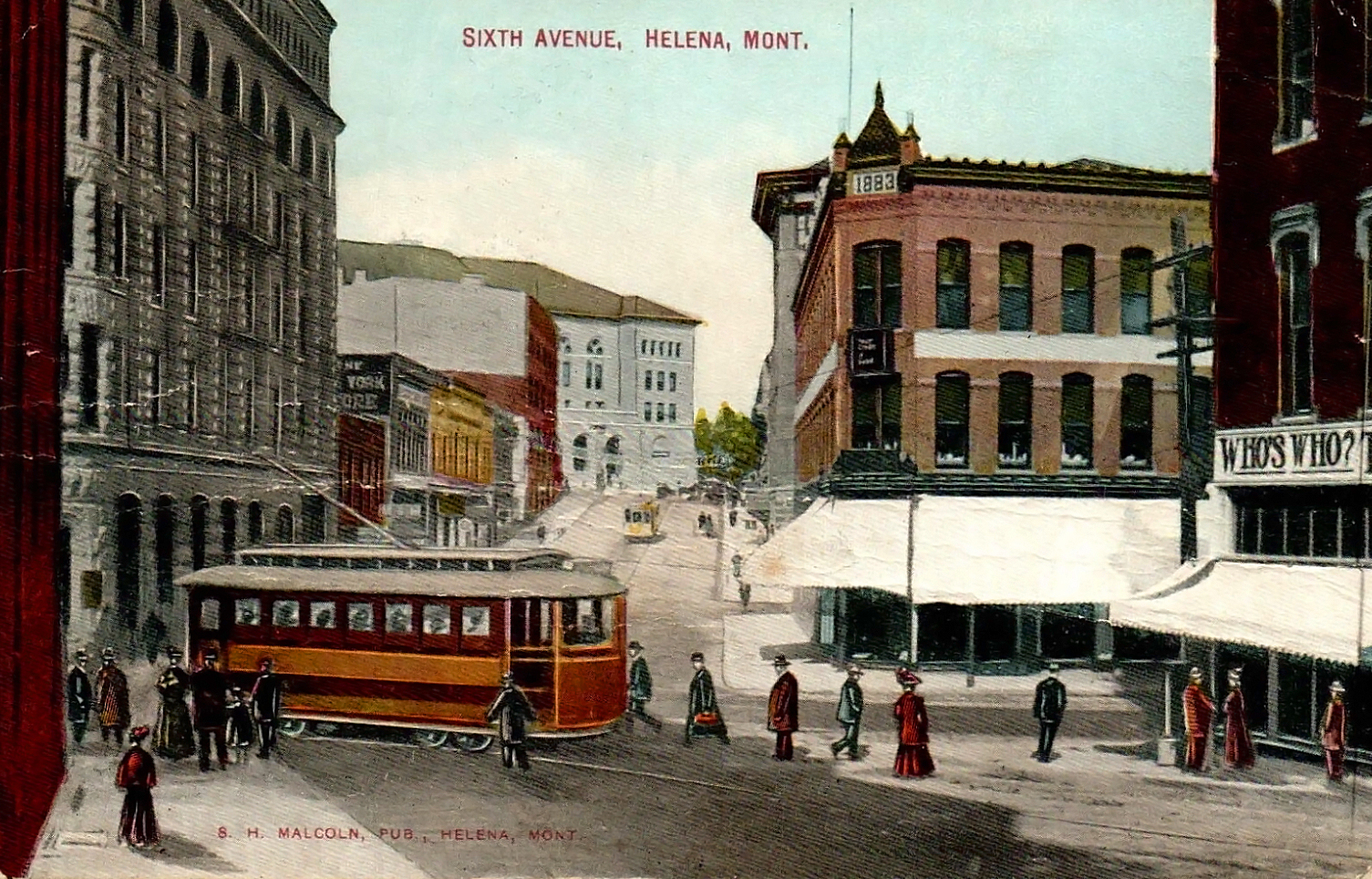- Home ›
- Interurbans ›
- Montana
Montana Interurbans and Streetcars: Lines, History, Photos
Published: May 2, 2025
By: Adam Burns
The history of streetcar railroads and interurban railways in Montana is a fascinating chapter that reflects the broader trends of transportation development in the United States during the late 19th and early 20th centuries. In Montana, these systems played a significant role in urban development and connectivity in what was then one of the more remote parts of the country.
In the late 1800s, Montana experienced rapid growth thanks to mining booms and the expansion of the Northern Pacific and Great Northern railroads. As towns and cities grew, there was a need for effective local transportation to move people and goods within urban areas. This need was met by the development of streetcar systems.
One of the earliest streetcar systems in Montana was established in Helena, the state capital. In operation by the late 1880s, Helena's streetcars began as horse-drawn carriages but quickly transitioned to electric streetcars by the 1890s. This was part of a broader technological shift, as electric traction became the standard for streetcar systems across the country due to its efficiency and reliability compared to horse-drawn or steam-powered options.
Butte, one of Montana's largest cities and a major mining hub, also developed an extensive streetcar network. The Butte Electric Railway Company began operations in 1890, and over the years, streetcars became a crucial part of daily life in the city. These streetcar lines not only facilitated commute to work and shopping but also provided access to entertainment venues and social gatherings, effectively knitting the community together.
Similarly, in the city of Missoula, the Missoula Street Railway Company started operating horse-drawn streetcars in 1890. By 1910, the system had converted to electric power, reflecting the national trend. This system served the rapidly growing city population and helped expand urban boundaries by providing reliable transportation options to emerging suburbs and neighborhoods.
Interurban railways represented another significant aspect of Montana's transit history. These were electric trains designed to connect urban centers with outlying rural areas or neighboring towns. While Montana's sparse population and vast landscapes limited the development of interurban lines compared to more populated states, some lines did exist to connect further outlying mining or logging towns to larger cities like Butte and Helena.
Anaconda Street Railway:
The Anaconda Street Railway served the City of Anaconda until the early 1940s. The interurban railroad is survived today by two of its carbarns which still stand in the city.
Billings Traction Company
The Billings Traction Company served the City of Billings. The operation was shortlived beginning in 1906 and abandoning railroad operations around 1917.
Butte Electric Railway
The Butte Electric Railway began operations in 1899 taking over property originally built by the Butte City Street Railroad in 1886. It continued operating streetcars until the service was discontinued in 1937 and sold to National City Lines, which began operating buses.
Great Falls Street Railway
As its name implies the Great Falls Street Railway served the City of Great Falls operating streetcars from 1890 until it was sold to the Montana Power Company in 1931. In 1938 the railroad was sold to National City Lines, which discontinued streetcar service in favor of buses.
Missoula Street Railway
The Missoula Street Railway was incorporated in 1912 serving the City of Missoula. It operated streetcars until the 1930s when the railroad was replaced by buses.
Legacy
The decline of streetcars and interurbans in Montana mirrored the national trend. The rise of the automobile and the construction of better roads in the 1920s and 1930s began to erode the dominance of rail-based urban transit. By the mid-20th century, most streetcar systems in Montana had been dismantled in favor of buses and personal vehicles, which were viewed as more flexible and modern modes of transportation.
Today, little remains of Montana's streetcar and interurban systems, except for a few historical records and remnants of tracks occasionally found during construction projects. The era of streetcars and interurbans in Montana was brief but pivotal in shaping the transportation history and urban landscapes of the state's key cities, influencing patterns of growth and economic activity that persist to this day.
Recent Articles
-
Colorado - Wine Tasting - Train Rides
Dec 25, 25 08:04 PM
To truly savor these local flavors while soaking in the scenic beauty of Colorado, the concept of wine tasting trains has emerged, offering both locals and tourists a luxurious and immersive indulgenc… -
Kentucky -Wine Tasting- Train Rides
Dec 25, 25 12:15 PM
Kentucky, often celebrated for its rolling pastures, thoroughbred horses, and bourbon legacy, has been cultivating another gem in its storied landscapes; enjoying wine by rail. -
Iowa -Wine Tasting- Train Rides
Dec 25, 25 12:12 PM
In this immersive article, passengers embark on a journey that combines the delights of wine tasting with the nostalgia of a leisurely train ride.




